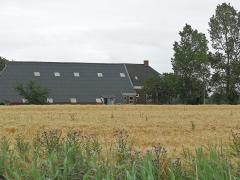Water quality footprint of agricultural emissions of nitrogen, phosphorus, and glyphosate associated with German bioeconomy
Fertiliser and pesticide application can cause extensive environmental damage. This study uses the water quality footprint to express nitrogen, phosphorus, and glyphosate emissions from agriculture in volumes of water needed to virtually dilute pollution and applies the approach to agricultural imports for the German bioeconomy in 1995 and 2020.
In total, the virtual German water quality footprint corresponds to 90 times the volume of Lake Constance. If water pollution had to be eliminated by dilution in export countries supplying Germany, volumes would be by a median of 300 times higher than the associated irrigation volumes there and could exceed natural water availability. Important and growing hotspots of clean water scarcity are China, Spain, and India. The impact of German agricultural supply chains needs to be monitored with regard to the sustainability of national consumption and to the effectiveness of increasing fertiliser and pesticide use, especially in African, Asian, and Pacific Countries
Authors
Specifications
- Publication title
- Water quality footprint of agricultural emissions of nitrogen, phosphorus and glyphosate associated with German bioeconomy
- Publication date
- 2 November 2023
- Publication type
- Article
- Publication language
- English
- Magazine
- communications, earth and environment
- Issue
- 4, 404
- Product number
- 5372




